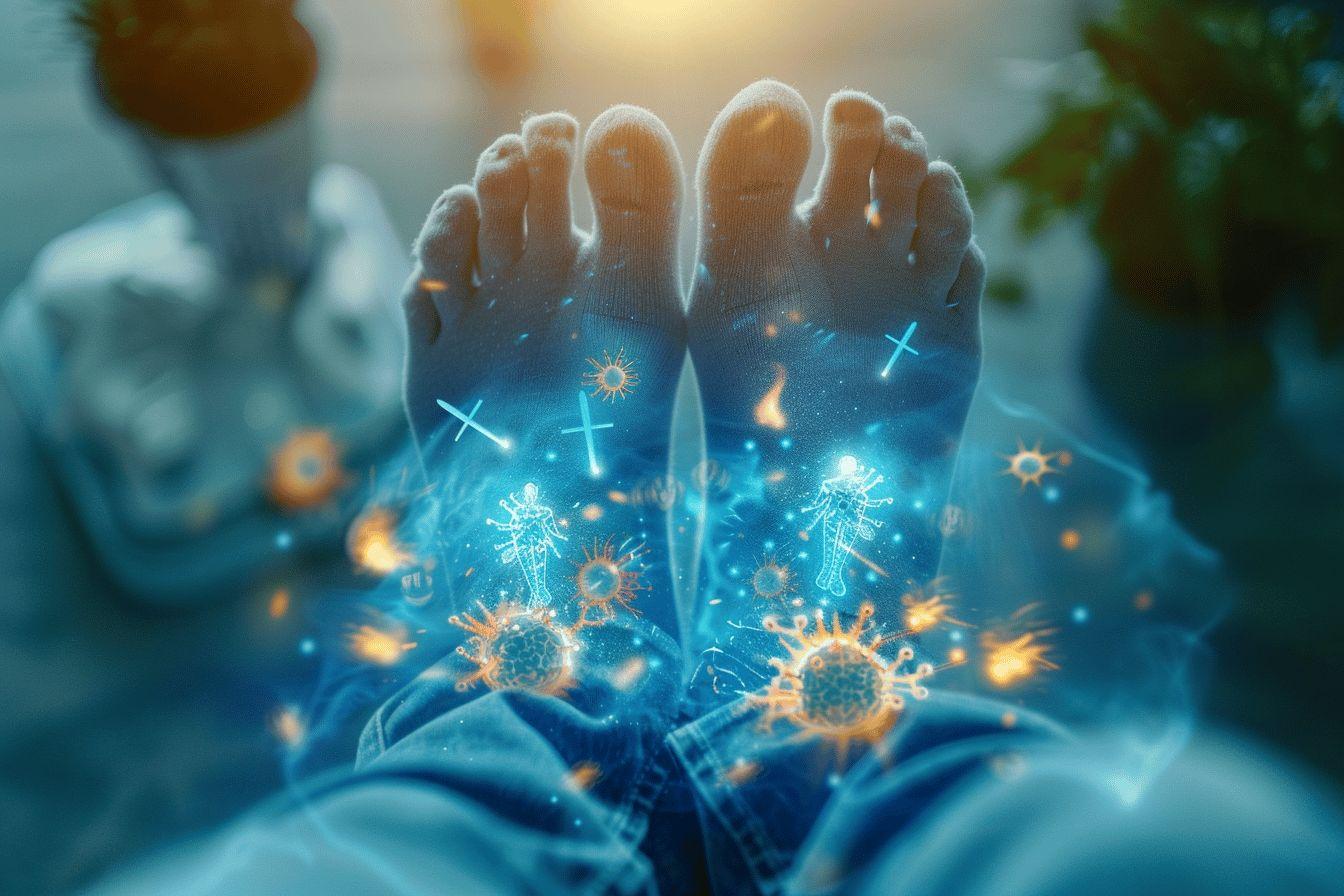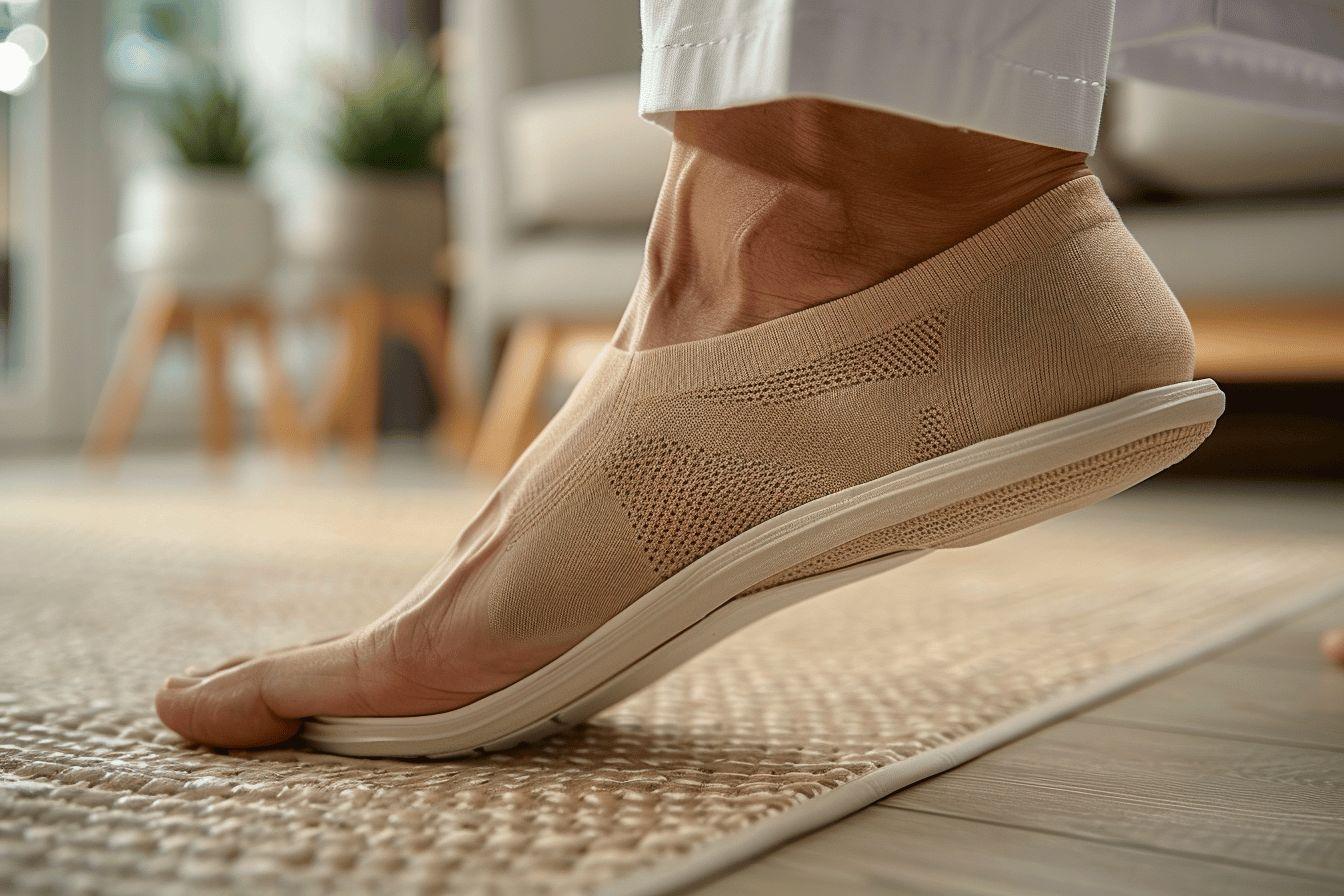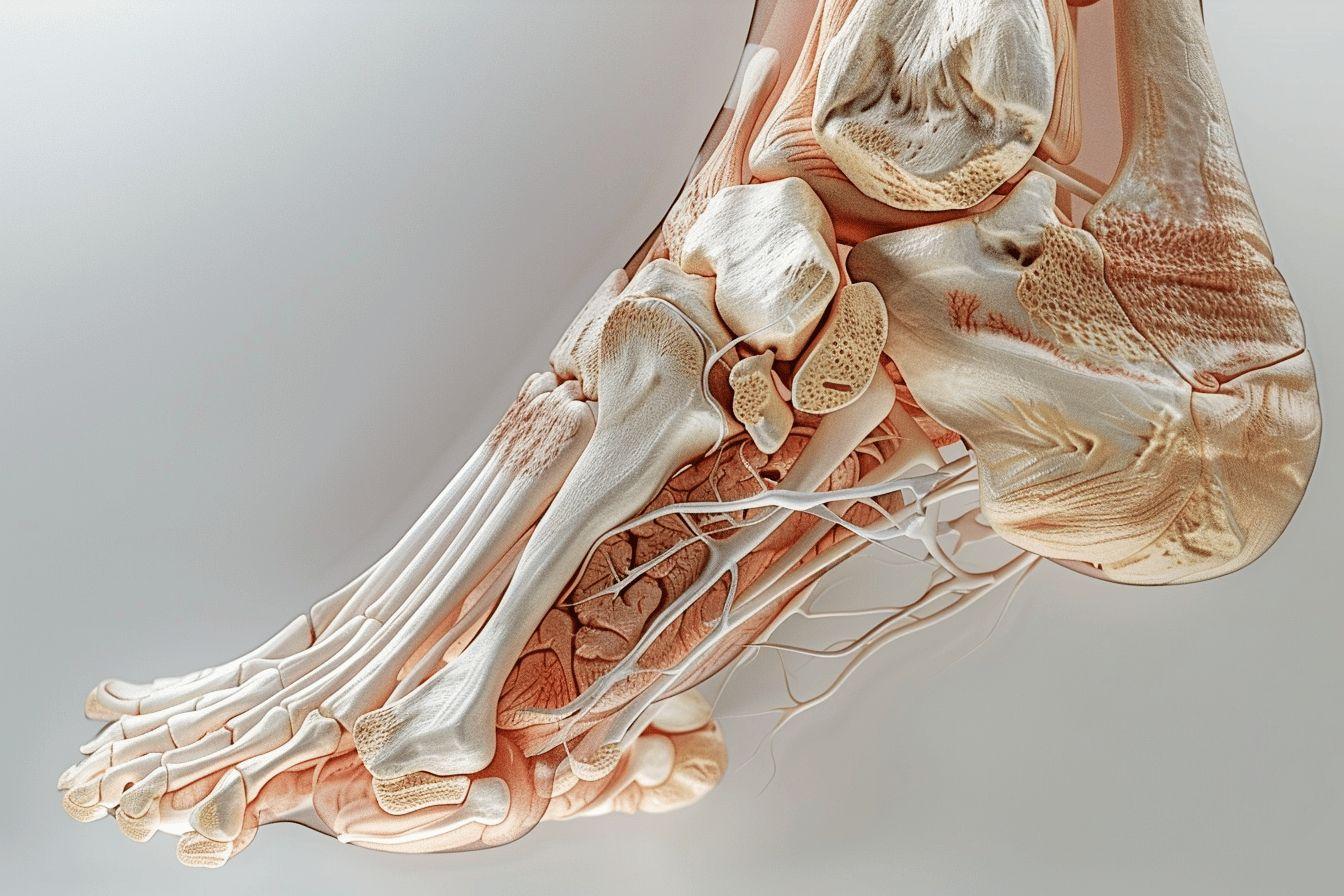This article details the main causes of foot pain and offers solutions to relieve it. Here are the key points to remember:
- Overexertion and microtrauma can cause inflammation and muscle tension
- Plantar fasciitis is a common cause of heel pain
- Heel spurs can cause severe pain when walking
- Other factors such as circulatory problems and anatomical deformities should be considered
- Prevention involves choosing the right shoes and regular stretching
Pain in the soles can be particularly debilitating in everyday life. Whether it's mild discomfort or intense pain, these plantar problems can affect our quality of life and our activities. Understanding the causes of these ailments is essential to finding appropriate solutions and regaining walking comfort. Let's analyze together the main reasons that can cause these painful sensations under our feet.
Overexertion and microtraumas: when our feet do too much
Our feet are constantly stressed, supporting our entire body weight. Excessive physical activity or intensive sports practice can quickly lead to plantar pain. Repetitive microtraumas, such as those sustained when running on hard surfaces, weaken the foot's structures.
Mechanical overexertion can manifest itself in several ways:
- Soft tissue inflammation
- Excessive muscle tension
- Bone microcracks
- Irritation of the plantar ligaments
To prevent overexertion-related pain, it is crucial to adopt a gradual progression in physical activities and to respect adequate recovery times. Using the right shoes and warming up properly are also essential for maintaining foot health.

Plantar Fasciitis: The Silent Enemy of the Arch
Plantar fasciitis is one of the most common causes of foot pain. This condition affects the plantar fascia, a band of fibrous tissue that stretches from the heel to the toes. When this structure is subjected to excessive stress, it can become inflamed and cause intense pain, particularly in the heel.
The characteristic symptoms of plantar fasciitis include:
- A sharp pain upon getting out of bed or after a period of inactivity
- A burning or tingling sensation under the foot
- A worsening of the pain at the end of the day
To relieve this condition, there are effective and natural remedies to quickly cure plantar fasciitis. These solutions may include specific stretches, applying ice, and wearing appropriate arch supports.
Heel Spur: When the Heel Becomes Painful
A heel spur, also called a calcaneal spur, is a bony growth that forms at the base of the heel. This prominence can cause severe pain, especially when walking or running. Although the spur itself is not always painful, it can irritate the surrounding tissues and cause inflammation.
Risk factors for heel spurs include:
| Factor | Impact |
|---|---|
| Excess weight | Increases pressure on the heel |
| Advanced age | Decreases tissue elasticity |
| Flat or high-arched feet | Alters force distribution |
| Wearing improper footwear | Alters the mechanics of the foot |
If you suffer from a heel spur, know that there are effective remedies for heel pain. These treatments may include stretching exercises, custom-made orthotics, and targeted physiotherapy techniques.
Other Common Causes of Plantar Pain
Aside from the conditions mentioned above, several other factors can cause pain in the soles of the feet. It is important to identify them in order to adopt an appropriate therapeutic approach.
Blood circulation problems can cause painful sensations in the feet. Venous insufficiency or arteritis of the lower limbs are examples of vascular disorders that can affect foot comfort. A consultation with an angiologist may be necessary in these cases.
Peripheral neuropathies, often associated with diabetes, can cause pain, tingling, or numbness in the soles of the feet. Regular medical monitoring and strict blood sugar control are essential to prevent these complications.
Anatomical deformities such as bunions (hallux valgus), hammertoes, or flat feet can alter pressure distribution when walking and cause chronic pain. In some cases, surgery may be considered to correct these structural abnormalities.
Osteoarthritis and rheumatic diseases such as rheumatoid arthritis can also affect the joints of the foot, causing pain and stiffness. Appropriate medical treatment, combined with physical therapy, can help relieve these symptoms.
Prevention and Relief of Plantar Pain
Given these multiple causes of pain under the feet, it is crucial to adopt a comprehensive preventative and curative approach. Here are some recommendations for taking care of your feet every day:
- Choose the right shoes: Choose models that offer good arch support and sufficient cushioning.
- Maintain a healthy weight: Reduce the pressure on your feet by maintaining a normal body mass index.
- Stretch regularly: Loosen your muscles and tendons to prevent excessive tension.
- Alternate physical activities: Vary the sports you practice to avoid overuse of certain foot structures.
- Moisturize your feet: Apply a moisturizer to maintain skin elasticity and prevent cracks.
In case of persistent or severe pain, don't hesitate to It's not necessary to consult a podiatrist or a specialist doctor. These professionals will be able to perform a thorough examination and offer you personalized treatment, whether through orthopedic insoles, manual therapies, or podiatric hygiene advice.
Taking care of your feet is not a luxury, but a necessity for maintaining our mobility and quality of life. By paying attention to the signals sent by our body and adopting good practices, we can greatly reduce the risk of developing debilitating plantar pain. Remember that every step counts in preserving the health of our precious natural supports.





Leave a comment
This site is protected by hCaptcha and the hCaptcha Privacy Policy and Terms of Service apply.